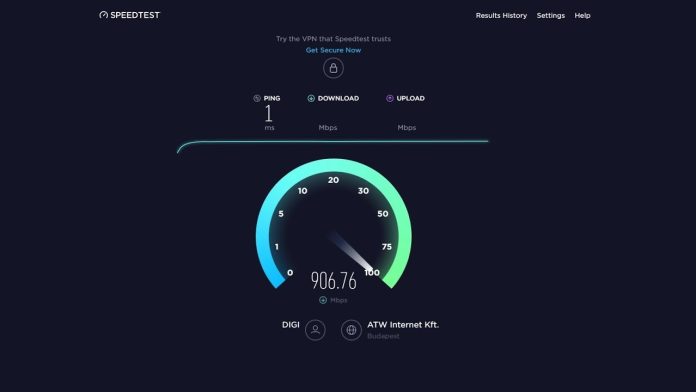Table of Contents
Design of Long Distance Transmission System
After completing the design of the RS codec and the custom data frame encapsulation module and the design of the gigabit rate error correction system, in order to test the performance of the designed system, this paper builds a long-distance transmission system to test the gain of the system.
The test system includes BERT, FPGA board, 10G SFP+ LR optical module, 10G SFP+ DWDM module, Pre-Amplifier (PA), Electronic Variable Optical Attenuator (EVOA), demultiplexer Wait. The BER tester is an ordinary Gigabit Ethernet tester. The white light and color light modules are domestic optical modules with a transmission rate of Gigabit and receiving threshold of -32dBm. The PA gain is 35dB
The BERT data enters the client side of the FPGA board through the white light module, and after being encoded by the FPGA and packaged with a custom frame, the optical signal is sent through a laser with a wavelength of 1556.55nm. The optical signal is attenuated by the EVOA, and the attenuated signal is passed through the PA to ensure that the output optical power is constant, so that the incoming optical power is not lower than the acceptance threshold of the optical module. After the custom frame is decapsulated on the side, the RS decoder is used for decoding and error correction. After recovering the correct Ethernet message, the data is looped back to the BER through the client side.
Test Results and Analysis
This paper first tests a long-haul system without FEC gain. The change of optical signal-to-noise ratio is simulated by adjusting the value of EVOA.
From the table below, we can conclude that the link without FEC function, when the power of the PA optical port is -42.06dBm, hangs up for 2 minutes and no bit error occurs, but when the power of the PA optical port is -42.51dBm, there is a bit error, indicating that the link The limit value power of the PA incident light without error code is about -42.06dBm.
| PA in(dBm) | BER | Timing Period (min) |
| -42.06 | 0.00E+0 | 2 |
| -42.51 | 1.15E-07 | 2 |
| -43.01 | 9.01E-07 | 2 |
| -43.52 | 9.96E-06 | 2 |
| -44.11 | 4.46E-05 | 2 |
| -44.46 | 1.97E-04 | 2 |
| -44.97 | 1.07E-03 | 2 |
| -45.57 | 3.88E-03 | 2 |
| -46.07 | 9.94E-03 | 2 |
| -46.52 | 2.28E-02 | 2 |
| -47.06 | 3.39E-02 | 2 |
Turn on the FEC function, use the adjustable attenuation to degrade the performance of the link, and measure the corresponding relationship between the PA incident power and the BER, the corresponding relationship is shown in the following table.
| PA in(dBm) | BER | Timing Period (min) |
| -47.65 | 0.00E+0 | 2 |
| -48.16 | 7.44E-09 | 2 |
| -48.66 | 2.30E-03 | 2 |
| -49.13 | 1.65E-01 | 2 |
| -49.69 | 2.02E-01 | 2 |
from the above table that the BER is zero when the PA incident optical power is -47.65 when the timing is 2 minutes. By comparing the optical port power, we know that the input optical power threshold of the link is reduced by 5.59dBm. When the bit error rate exceeds the error correction threshold, the BER rises sharply, and even deteriorates compared to the normal signal without FEC, which is also in line with the nature of the RS code.
When the long-distance transmission system without FEC function is used, the BER shows a slow and continuous increasing trend with the continuous decrease of the incoming optical power. When the incoming optical power increases to -47dBm, the BER reaches 3.39e-02. In the long-distance transmission system with the FEC function, we can get that the BER drops sharply when the incoming optical power is -48.16dBm, indicating that the RS code performs error correction processing, and the BER is zero when the incoming optical power is -47.65dBm. Through the analysis, it can be seen that FEC has a significant effect in improving the BER of the system.
When the minimum incident optical power of the system with FEC does not have a BER, the BER of the system without FEC at this time is greater than 3.39e-2, which is quite different from the RS code simulation in Section 2.4. The low signal-to-noise ratio in the channel attenuation leads to misjudgment of the internal data recovery of the SERDES, and the version without FEC will discard the current frame after it cannot detect the Ethernet preamble of the current frame, which makes the BER of the system rise rapidly. Since the program containing FEC detects fixed-length frames, and only discards the message when the frame header is not detected 5 times in a row, the message will not be discarded when the preamble within 5 times is wrong, but error correction processing will be performed, hence the system BER without FEC will appear to be higher than the theoretical BER.
Through the test of the designed RS codec and custom frame encapsulation module, the RS codec’ performance is stable, the data link rate can reach gigabit and the coding gain can reach at least 5.5dB, which meets the expected design goals.
Conclusion
In this paper, the designed RS codec and custom frame module are combined to form a gigabit rate error correction system, and a long-distance transmission test platform is built to test the designed system. The test results show that the RS codec can provide the entire chain. The gain of more than 5.5dB in the channel basically achieves the expected design goal.








